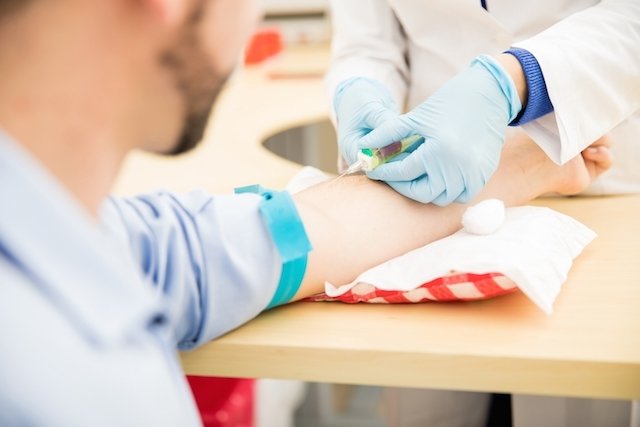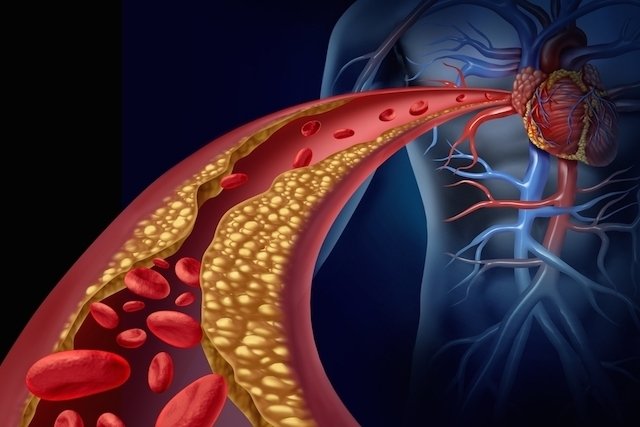The lipid profile is a laboratory test requested by the doctor with the aim of checking the person’s lipid profile, that is, the amount of LDL, HDL, VLDL, triglycerides and total cholesterol, which when they are at values outside the normal range, represent a great risk for develop cardiovascular diseases, such as angina, heart attack, stroke or venous thrombosis, for example.
The lipid profile test is requested by the doctor with the aim of identifying the risk of these diseases and helping to guide the ideal treatment for each person, as a way to prevent health complications.
To determine the lipid profile, it is necessary to collect a blood sample in the laboratory, which can be done with or without fasting. The need for a 12-hour fast should be indicated by the doctor according to the person’s clinical history.

In the complete lipid profile exam, it is possible to observe the values of:
1. Colesterol LDL
The LDL, ou low density cholesterol, is popularly known as bad cholesterol because when it is found in high concentrations it is associated with a greater risk of cardiovascular diseases. However, LDL is essential for the proper functioning of the body, as it participates in the formation of several hormones.
Ideally, LDL cholesterol levels should be below 130 mg/dl, however, for some people stricter controls are necessary, such as below 100, 70 or 50 mg/dl, depending on conditions such as lifestyle, history of diseases or the presence of other cardiovascular risk factors. See more about LDL and what to do to control it.
2. Colesterol HDL
HDL, or high density cholesterol, is popularly known as good cholesterol and it is important that it is increased in circulation, as it represents greater cardiac protection. It is recommended that its value be above 40 mg for men and women, as a way to prevent the risk of cardiovascular diseases and, for this, it is recommended to carry out physical activity and have a diet rich in good fats and fiber, present in fish. , olive oil, vegetables and seeds, for example.
3. Colesterol VLDL
VLDL is the type of cholesterol whose function is to transport triglycerides and cholesterol to the body’s tissues, and is part of the non-HDL cholesterol group, therefore, it must be kept at low values, and it is not recommended that its values are above 30 mg/dL. Learn more about the harm of high VLDL cholesterol.
4. Non-HDL cholesterol
It is the sum of all types of cholesterol, except HDL and, just like isolated LDL cholesterol, it is also considered by doctors to be an important risk factor for cardiovascular diseases, and can be used to monitor and guide treatment.
Non-HDL cholesterol must be at levels 30 mg/dl above what is considered ideal for LDL, so if the maximum LDL value recommended for a person is 130 mg/dl, non-HDL cholesterol is considered normal if it is up to 160 mg/dl.
5. Colesterol total
It is the sum of HDL, LDL and VLDL, and it is desirable that it has a value below 190 mg/dL, since when it is high it also increases the risk of diseases such as heart attack, stroke, angina or pancreatitis, for example. However, it must be taken into account that, if good cholesterol (HDL) is too high, it can increase the value of total cholesterol, so it is always important to compare the values of the complete lipid profile.
6. Triglycerides
Also known as triglycerides, these fat molecules are an important source of energy for the body and muscles, however, when they are high in blood circulation, they can facilitate the accumulation of fat in blood vessels and the development of cardiovascular diseases.
The desirable triglyceride value in the lipid profile test is less than 150 mg/dl, and the higher the value, the greater the chances of complications. In addition to cardiovascular diseases, excessively high triglycerides can also cause pancreatitis.
See what to do to lower triglycerides.

When is lipid profile testing indicated?
Generally, the lipid profile is measured for adults every 5 years, however, if there is a greater risk of heart disease or if cholesterol is altered in other tests, this interval should be shorter.
Although this test is not normally requested for children and adolescents, it can be carried out in those with a high chance of developing heart disease, such as those with genetic cholesterol diseases, diabetes, high blood pressure or obesity, for example.
How to know if my cholesterol is good
To find out if your cholesterol is good, enter the results of your lipid profile test into the calculator below:
What to do when it’s changed
When the lipid profile is altered, it is important to undergo treatment, which is guided by the doctor and, preferably, monitored by a nutritionist. The main ways to treat these changes include:
- Diet changes: you should avoid foods rich in fat, such as fried foods or fatty meats, and excess carbohydrates. However, one should never forget that the diet must be balanced, and with the ideal amounts of nutrients for each person, therefore, it is recommended to consult a nutritionist, so that you know how to select foods better and in the ideal quantity;
- Healthy lifestyle habits: to reduce bad cholesterol and increase good cholesterol, it is recommended to practice regular physical activity, at least 3 to 6 times a week, with an average of 150 minutes of exercise. It is also important to stop smoking, as this habit influences the drop in good cholesterol;
- Use of medicines: in many cases the doctor will recommend the use of medications to control cholesterol and triglyceride levels, and some of the main ones include statins to lower cholesterol, such as Simvastatin, Atorvastatin or Rosuvastatin, for example, or fibrates to lower triglycerides , such as Ciprofibrate or Bezafibrate, for example. Learn about medication options to lower cholesterol.
Furthermore, to reduce the chances of developing cardiovascular diseases, it is also important to control other risk factors, such as controlling blood glucose levels, blood pressure and losing weight, as all these factors contribute to the formation of atherosclerosis in the blood vessels and the disease development.

Sign up for our newsletter and stay up to date with exclusive news
that can transform your routine!
Warning: Undefined array key "title" in /home/storelat/public_html/wp-content/plugins/link-whisper-premium/templates/frontend/related-posts.php on line 12
Warning: Undefined array key "title_tag" in /home/storelat/public_html/wp-content/plugins/link-whisper-premium/templates/frontend/related-posts.php on line 13



